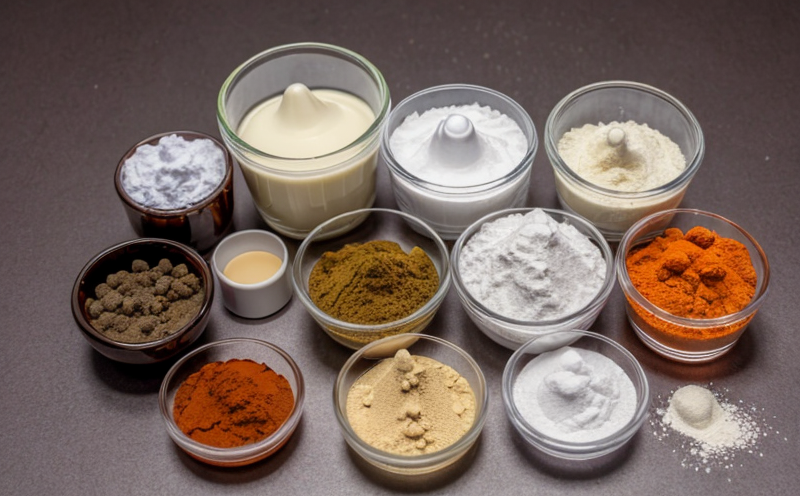Polymer Residual Monomer Testing
In the pharmaceutical industry, excipients and formulation ingredients play a critical role in ensuring drug product quality. Among these components, polymers are essential for their unique properties that enhance the stability, dissolution rate, and bioavailability of active pharmaceutical ingredients (APIs). However, residual monomers present during polymer synthesis can pose risks if not properly controlled. This article focuses on Polymer Residual Monomer Testing—a critical service provided to ensure compliance with regulatory standards.
The testing process involves the identification and quantification of residual monomers in polymers used as excipients or formulation ingredients. These monomers are by-products from polymerization reactions and can include vinyl monomers, acrylics, and others. Their presence may indicate incomplete polymerization or impurity contamination, which could affect the safety and efficacy of pharmaceutical products.
Regulatory bodies such as the U.S. Food and Drug Administration (FDA) and European Medicines Agency (EMA) have stringent guidelines to ensure that residual monomer levels are kept within safe limits to protect public health. Compliance with these regulations is non-negotiable for manufacturers, and this service helps pharmaceutical companies meet those standards.
The testing protocol typically involves sample preparation followed by the use of advanced analytical techniques such as gas chromatography (GC), high-performance liquid chromatography (HPLC), or Fourier transform infrared spectroscopy (FTIR). These methods allow for precise quantification and identification of residual monomers. The acceptance criteria are based on international standards like ISO 17952-3:2018, which specify the allowable limits for specific monomers in different polymers.
Our laboratory is equipped with state-of-the-art instrumentation to perform these tests accurately and reliably. Our team of experts ensures that every step from sample collection to final report generation adheres strictly to best practices and international standards. By leveraging this service, pharmaceutical companies can maintain high-quality manufacturing processes and protect their brand reputation.
Understanding the importance of residual monomer testing in polymer excipients is crucial for quality assurance teams. This service not only helps in maintaining compliance but also ensures that the final product meets the highest safety standards required by regulatory authorities. By investing in this critical testing, pharmaceutical manufacturers can demonstrate their commitment to patient safety and product integrity.
Benefits
Polymer Residual Monomer Testing offers several key benefits that are essential for the success of pharmaceutical manufacturing processes:
- Regulatory Compliance: Ensures adherence to FDA, EMA, and other regulatory guidelines.
- Product Quality: Minimizes the risk of impurities affecting product stability and efficacy.
- Risk Mitigation: Identifies potential safety hazards early in the manufacturing process.
- Informed Decision-Making: Provides data-driven insights for optimizing production processes.
Industry Applications�>
| Application | Description |
|---|---|
| Polyethylene Glycol (PEG) | Used in various formulations, including oral drugs and transdermal patches. |
| Ethylene-Vinyl Acetate Copolymers | Commonly used as film coatings to control drug release rates. |
| Sodium Starch Glycolate | An excipient that enhances the flow properties of granules and tablets. |
The table highlights some common polymers used in pharmaceuticals where residual monomer testing is crucial. Each polymer has unique characteristics, but their synthesis can introduce unwanted by-products if not properly controlled. Our comprehensive testing ensures that these residues do not exceed safe limits.
| Monomer | Acceptable Limits (mg/kg) |
|---|---|
| Vinyl Acetate | 50 |
| Acrylamide | 10 |
| Methyl Methacrylate | 30 |
The second table provides specific acceptable limits for various monomers based on international standards. These limits are critical for ensuring that the polymers used in pharmaceutical manufacturing meet regulatory requirements and maintain product quality.
Environmental and Sustainability Contributions
Polymer Residual Monomer Testing contributes significantly to environmental sustainability by helping reduce waste and promote responsible use of resources. By identifying and managing residual monomers, manufacturers can minimize the ecological footprint associated with pharmaceutical production processes.
This service supports green chemistry principles, which aim to develop environmentally friendly chemical technologies that reduce or eliminate the use and generation of hazardous substances during manufacturing. Through precise testing and quality control measures, we help pharmaceutical companies adopt sustainable practices while maintaining product integrity.
Furthermore, by ensuring compliance with regulatory standards, this testing helps prevent environmental contamination from improperly handled polymers. The insights gained from these tests can also inform the development of more efficient production methods that reduce overall resource consumption and waste generation.





